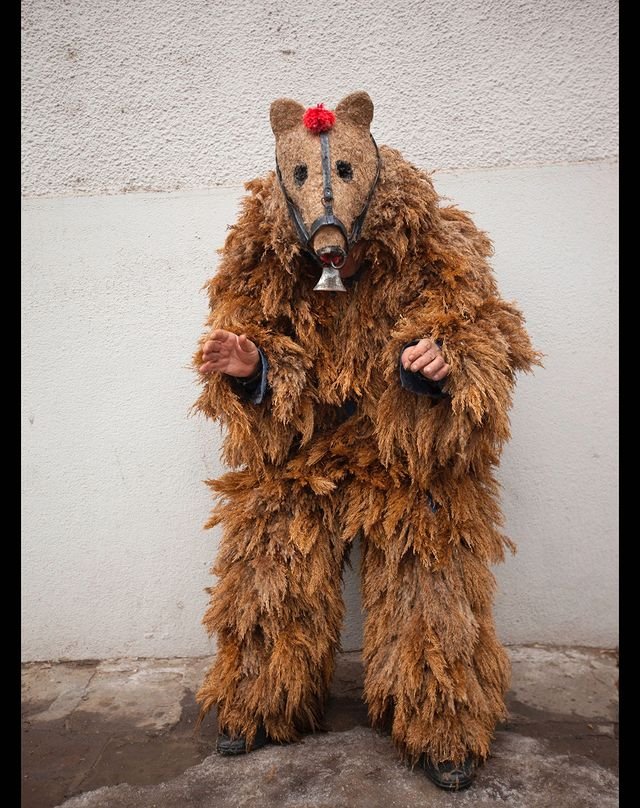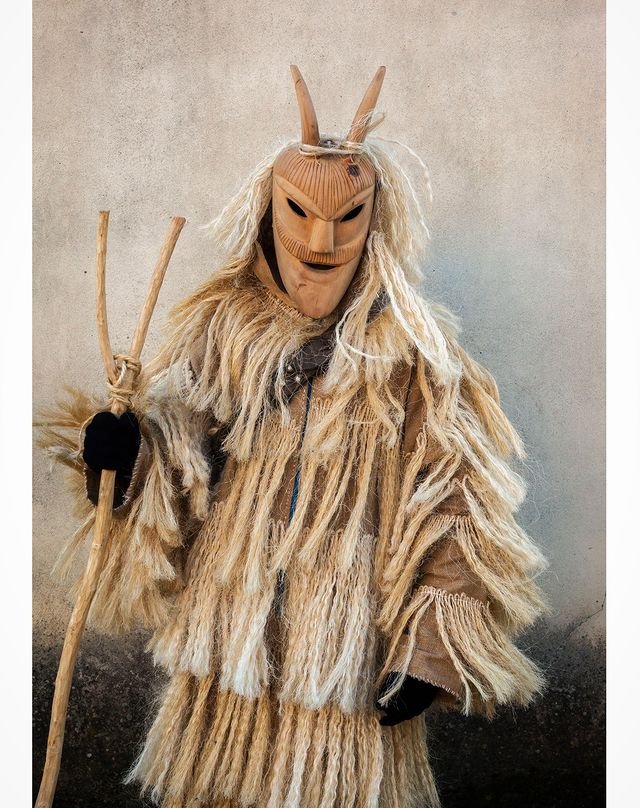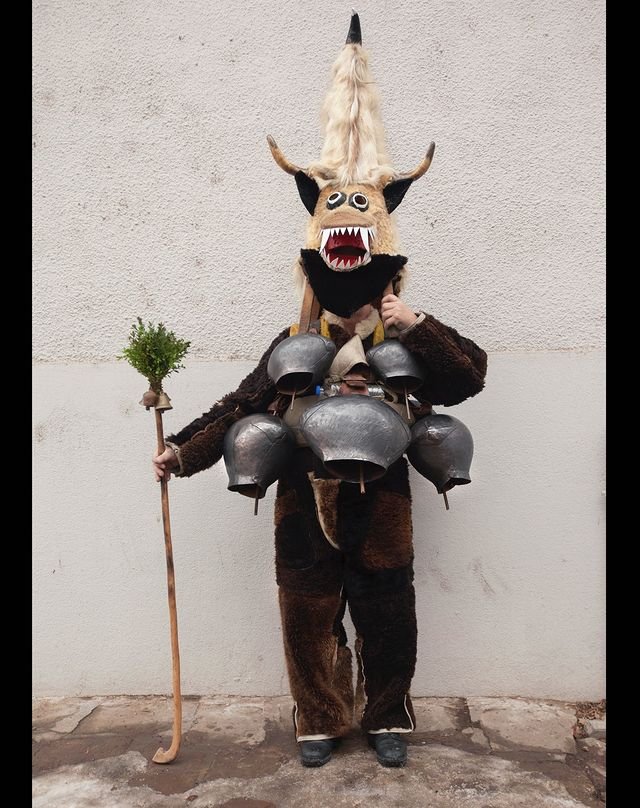Carlos González Ximenez
Carlos González Ximenez is a Photographer and an artist bringing the slowly fading nuances of our past and history to life, he says “Photographing for me is an act of exploring the cultural and spiritual richness of rural communities, and serves me to continue to reflect on this subject and understand a little more of their ancestral connection with the cosmos” . Carlos, On speculations of ancestral identities, provides insights into his objectives and driving forces behind his photography subjects.
What is spirituality for you?
Spirituality is a path and a tool that allows me to find meaning and purpose in life, a tool to move forward in the "KNOW YOURSELF" that was at the entrance of the Temple of Apollo at Delphi. Spirituality is a search and a guide that allows you to ask questions and, in many cases, find answers and solutions. By using spirituality you foster the virtues that give a sense of purpose and meaning in life.
What makes you want to photograph and speculate about the subject you are doing?
I am fascinated by ancestral masks and their ritual practices, they are art forms that have a great visual, and emotional impact, and are full of symbolism. I am also very motivated by the anthropological and magical aspects of these entities, their transgressive behaviours and all that is hidden behind the mask, such as their role in the rituals of rural communities to connect with their ancestors and with divine and natural forces, capable of expelling evil spirits that visit villages and towns in the winter cycle; or the powers of fertility, initiation or purification, which are granted to them when they act in their rituals.
Photographing for me is an act of exploring the cultural and spiritual richness of rural communities, and serves me to continue to reflect on this subject and understand a little more about their ancestral connection with the cosmos.
What have you understood about the dramatic identities associated with mythological sacredness?
With time and visits to the "ancestral" winter festivals of rural European communities, you come to understand that these identities are manifested in the symbolic forms adapted by the "sacred" masks and their costumes. They are used in pagan religious rituals and ceremonies and have, therefore, a sacred and mystical character. It is believed that through them connections can be established with the divine and spiritual world, with the spirits of the ancestors, or with the supra-natural forces, capable of regulating or accompanying the cycle of the stars and being representatives of the gods of nature. Their presence is necessary to revitalize the annual cycles of Nature and for the excellent development of the communities that practice them.
Masks and theatrical costumes are something of a common theme for you - why?
In addition to being artistic forms of great visual and emotional impact, another aspect that I document and am interested in masks and costumes are the elements, instruments and gadgets, that they carry and that are supposed to have magical properties. For example, the cowbells they carry and ring are essential to ward off evil spirits and to awaken vegetation in the final stages of winter. They also carry sticks and other contraptions to strike and encourage fertility, etc. The subject matter I deal with in my works is so complex and interesting that it absorbs all the time I can devote to research and photography.
It is clear that such dramatic identities have mysteries and stories associated with them.
Is this a magical journey? Tell us how it all started.
Every journey has its magic, and this 25-year journey is no less so because of the subject matter and the challenges involved. In 1985 I started using the camera to collect ethnographic reports of traditions. My objective was to document the manifestations of popular religiosity in Christian celebrations in the Iberian Peninsula: Holy Weeks, Corpus Christi, and some pilgrimages. It was New Year 1996 when I started this project with my first expedition through towns and villages of Zamora, on the border between Spain and Portugal, known as La Raya, and I made my first reports on the "Mascaradas de invierno" (winter masquerades) in the Iberian Peninsula. It was the moment when I understood that this was my field of work: the masquerades of the winter cycle. As my knowledge advanced, I began to narrow the relations between the Iberian masks and others of "distant" zones of Europe, like Bulgaria and Romania. Then came North Africa, and magic wanted me to get to know them. I try to make sure that magic accompanies each trip since in the end what I photograph and document are the magical elements of ancestral rituals and I hope that it continues to accompany me on my expeditions.
What is your relationship with mysticism, tribal and ritual settings? You have captured subjects with festive emotions at times, almost like a snapshot before a celebration. Is this intentional? How do you manage the time, place and people for your photographs?
Mysticism, tribal settings and rituals are subjects that I am passionate about. They are part of a parallel world to ours, but at the same time we carry them in our genes and they mark our culture and way of being. My relationship with these activities is one of study and of trying to understand them in order to photograph them, being faithful to their nature.
Those prior to the trips and expeditions require, in the first phase, research preparation and knowledge of the cultural events I am going to photograph, for which I study in depth the geographic-temporal space of the celebrations and rituals. On the ground, "in situ", I concentrate my five senses to capture and portray the subjects and their festive emotions. There is nothing prepared, it is by working in the field that I meet the individuals with their masks and that I go into action.
The choice of the traditions to be photographed, the place or the time, takes a lot of research, in some cases several research methodologies, in some cases several years. For example, preparing the 12-day expedition to the New Year Traditions of Moldova (Romania) took six years. In this case, the heavy snowfall in winter makes the study of climatological weather play a key role in the success of a trip.
You have an interest in indigenous life - are you connected to your own personal experiences and associations? What was your life like growing up?
I am deeply interested in indigenous cultures and especially those that have managed to survive in harmony with the environment and their traditions. The journey through the mask leads me to investigate and photograph people with increasingly "primitive" traditions, more "primitive", with archaic rituals, I still have a long way to go and with time I get more involved in my work having more and more profound experiences that I can photograph.
To be able to photograph these rituals you have to learn to adapt to the communities and participate in their celebrations. Communities and participate in their celebrations. As the outsider is usually invited to any celebration, it is a means to be accepted and to be able to use the camera with some freedom. Evidently, I am not magic and my presence usually focuses the attention of some mask and suffer their outrages as one more neighbour.
Totems, folklore and African significance are also visible in some way as your focus themes. Could you tell us about one of the best memories that made you want to continue and explore your venture?
My interest in African folklore, particularly the Amazigh cultures of North Africa, is relatively new.
I started studying Amazigh culture in the "Quarantine of 2020", it was my intellectual escape during those months. I took refuge in research, which gave me a mental space that led me to design a five-year work project. Last year I fulfilled my first objective and travelled through the first valleys and mountains of the Atlas to live and photograph the mythical-ritual experiences of the Boujloud of the Amazigh tribes, a celebration of the animal spirit and fertility of great importance in this culture, and a great unknown. These kinds of experiences impregnate my character and inspire me to continue exploring and documenting ancestral cultures and traditions.
Tell us what you think about photography as a tool to capture life and moments. What else do you photograph? What makes you photograph something you do?
Photography is a tool to record social and cultural moments and small details, emotions and feelings.
These are details that might otherwise go unnoticed by the human eye, and I think that has been one of the most pursued goals during the history of photography, by the social photographer, the anthropologist, the historian, and so on.
Photography can be a way of preserving the historical and cultural memory of the people. For example, the project in which I collaborated as a volunteer photographer tries to record photographically the opening of the mass graves of the Spanish Civil War. In this case, I accompany the Forensic and Social Anthropology teams. All this documentary work has the sense to give visibility to an atrocity hidden for 80 years in Spain. The visual documentation will be part of the "Historical Memory of the Spanish Civil War and Post-Civil War".
To the question of what moves me to photograph what I do, I am moved by the social commitment, nature, working outdoors and photographing the beauty of life in all its forms. I like to photograph what inspires me, such as a tree, a cat, a portrait of a friend or an ancestral journey.
What are your intentions with your work? Are you looking for something?
My interest in the world of masks has marked the direction of my work for many decades and the rhythms of my life are marked by the rhythms of the rural Communities. I live the winter with special intensity, since it is at this time that I travel to photograph, and each year there are many villages that I visit. In winter I get involved in the cycle with the same or greater intensity than many participants in the festivities.
My growth as a photographer has been linked to this cycle and to these art artistic manifestations. However, the connections between cultures through masks an endless work for one person, even for a hundred. Every year new studies emerge and I discover new traditions.
I will keep searching and I believe that this theme will retire me when I no longer have my five senses.
I will continue to search and I believe that this theme will retire me when I don't have my five senses ready to be able to pick up a Photographic illustration.
Last but not least: Where are you going now? What do you hope to do from now on?
Right now the direction of my projects is to continue exploring and collecting the European ancestral masks and the works started on the festivals of North Africa. Ultimately I am studying the real possibility of expanding my field to some regions of Mexico such as the central valleys of Oaxaca.
In addition, I have my first book practically finished and I hope that it will be followed by others that will allow me to give knowledge and leave a visual legacy that will inspire others to connect with their ancestral roots and recognize the importance of preserving and honouring our cultural diversity.
interview JAGRATI MAHAVER
What to read next
























